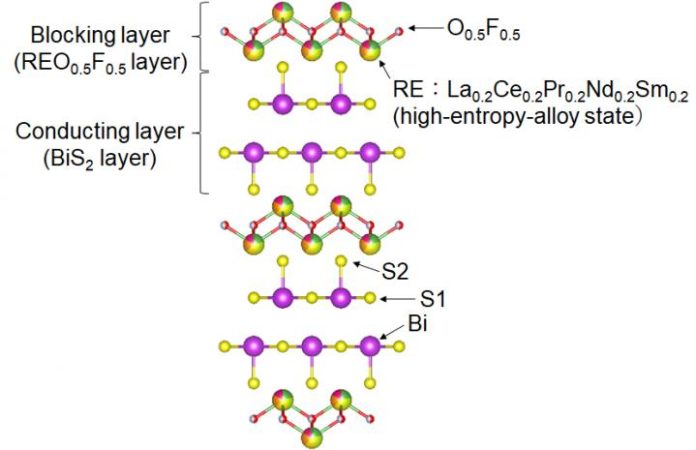Scientists at the Tokyo Metropolitan University have made new superconductors made of layers of bismuth sulfide (BiS2) and a high entropy rare earth alloy oxyfluoride. These superconductors are made of five different rare earth (RE) elements at the same crystallographic site that possess superconducting properties over a wider range of lattice parameters.
A property of superconductor- zero resistivity promises loss-free power transmission and powerful electromagnets. The challenge has been to find a material that holds this property at higher temperatures, nearer to encompassing temperatures. In spite of centered work and various leaps forward as of late, the hunt is still on for successful techniques to make new superconducting materials.
Using layered materials with a molecular structure consisting of alternating superconducting layers and “blocking layers” acting as insulating spacers could possibly lead to a material with zero resistivity properties. Using this strategy, scientists uncovered an important aspect of designing the insulating layer.
They combined five different rare earth (RE) elements, lanthanum, cerium, praseodymium, neodymium, and samarium, and create a “high entropy alloy” in the blocking layer. High entropy alloys have taken extensive consideration lately for their robustness. The group’s new materials, with various extents of REs (10-30%), displayed improved superconducting properties; specifically, materials with a similar period in their sub-atomic structure showed a superconducting change at higher temperatures when the blocking layer contained a high entropy composite.
Now, the material is expected to stabilize the crystalline structure of the superconducting layer.
Given the presence of countless layers which are perfect with RE oxides, this advancement opens the route for a wide new system for designing new, progressive superconducting materials.
The work is published in the journal Applied Physical Express.
